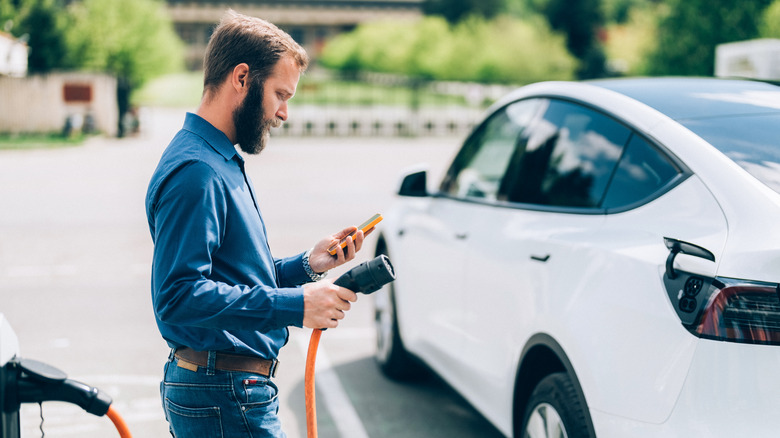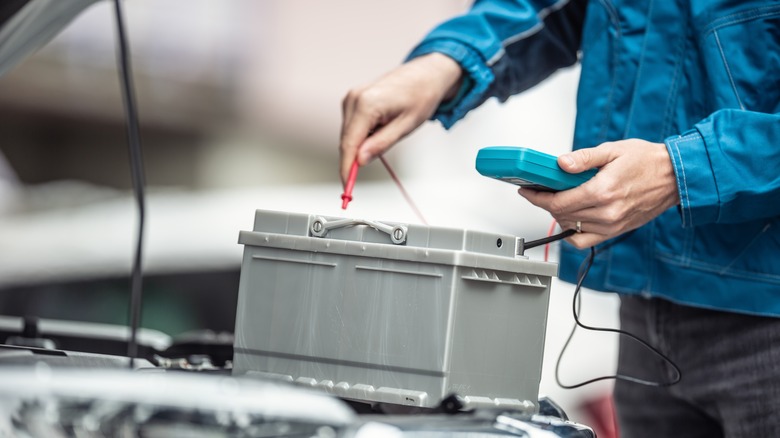How Electric Cars Contribute To E-Waste Problems
Electric cars are increasingly seen as a fundamental issue relating to climate change. Sales of such vehicles have increased dramatically in the United States since 2020: Statista data reveals that 307,590 EVs were sold in-country that year, compared to 607,570 in 2021 and 918,460 in 2022. This is a large upswing, but it doesn't mean everyone is riding on the EV train.
There are a number of factors contributing to this, of course. Some are unwilling to pay the considerable up-front cost of an electric vehicle, which will tend to be higher than for an equivalent gas vehicle. Others are concerned about the need to regularly access charging facilities, and how few and far between they are (relatively speaking) in some areas of the country. Then, of course, there's another key fact: electric vehicles aren't exactly green, emission-free vehicle solution they're often painted as.
Yes, it's true that electric vehicles don't burn gas and don't emit carbon dioxide while in use. Over the lifespan of such a vehicle, though, from creation to the end of its life, E-waste becomes a considerable concern. Here's why.
The battles for (and with) the batteries
A future defined by battery-powered cars, of course, is going to be one that is beset by a significant problem: How can those batteries be created and recycled in a green fashion? As Elsevier's Christina Valimaki put it, according to Wired, in 2018, "one of the biggest environmental problems caused by our endless hunger for the latest and smartest devices is a growing mineral crisis, particularly those needed to make our batteries."
Wired also noted that mining lithium by pumping water (evaporitic extraction being one of the most common methods of acquiring it) cost around half a billion gallons of water for a single tonne of the metal. Tragically and inevitably, we're also extracting it at a devastating, unsustainable pace. According to Earthworks, Nickel and Cobalt are also crucial elements of such batteries, and the push towards electric vehicles and other such devices pushes our need for these metals far beyond the supplies the planet may hold: a potential 426% of available resources in the case of the latter.
The widening of mining efforts as these resources deplete, accordingly, increases the cost to the environment. The metals that are components in these batteries, further, means that they should not simply be tossed away. The EPA defines them as critical minerals, "raw materials that are economically and strategically important to the U.S., have a high risk of their supply being disrupted and for which there are no easy substitutes."
How wasteful e-waste really is
In January 2019, PACE and the World Economic Forum issued the report "A New Circular Vision for Electronics: Time for a Global Reboot." It discussed the problem of the upgrade-heavy world, and how easily we can accumulate devices that we consider obsolete. It noted that 50 million tons of e-waste were produced around the world every year, and that this number could increase to 100 million without affirmative action.
While the batteries and components of EVs are far from the only contributor to this, these things will become greater and greater factors as such vehicles become more widespread. In November 2019, Nature published the paper "Recycling lithium-ion batteries from electric vehicles," from Gavin Harper et al. It acknowledges that some approaches to dealing with exhausted EV batteries are time-consuming, expensive and potentially hazardous: "Disassembly of battery packs from automotive applications requires high-voltage training and insulated tools to prevent electrocution of operators or short-circuiting of the pack."
At the same time, there are enormous potential benefits to learning to manage this waste effectively, the researchers go on. E-waste is one of the biggest concerns that surrounds the boom in electric vehicles, then, but just as with the cars themselves, technology is expected to increasingly allow the green to become greener.


